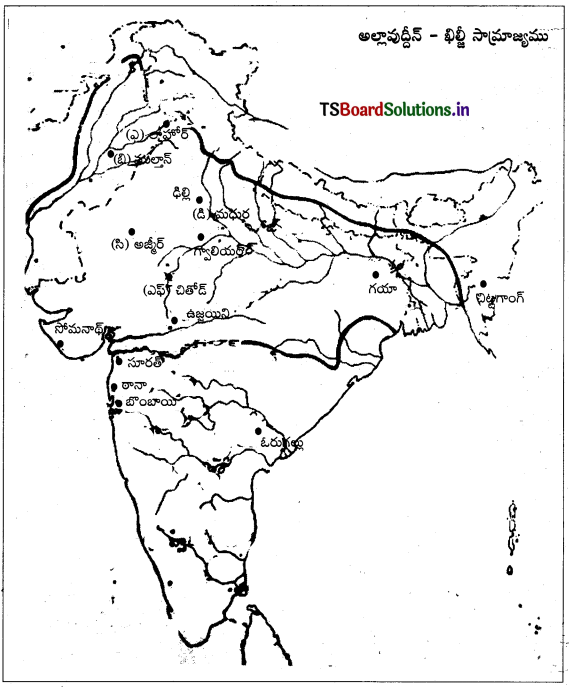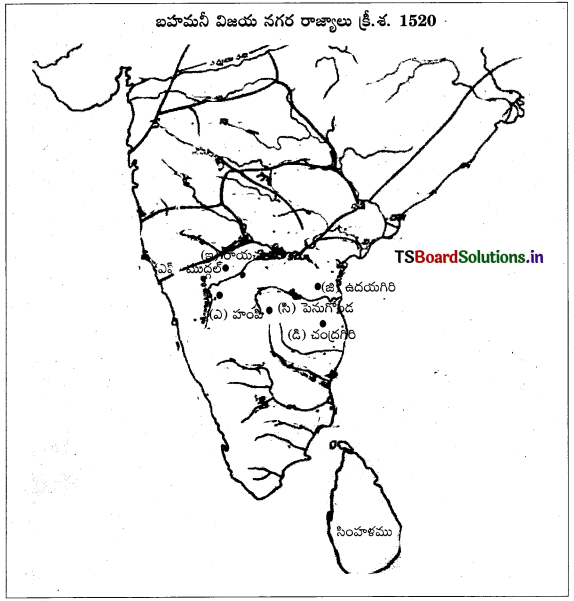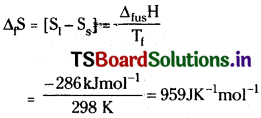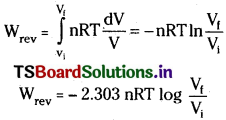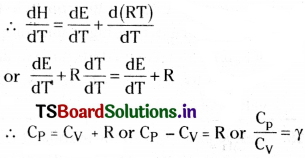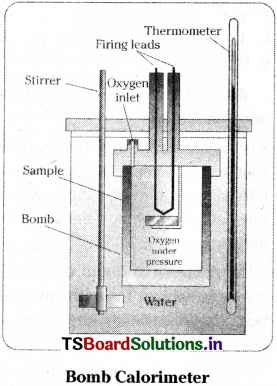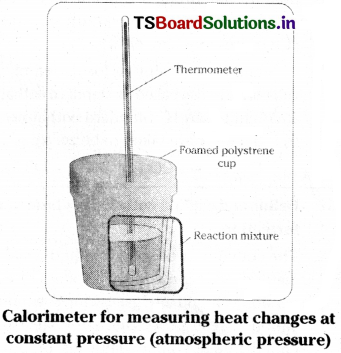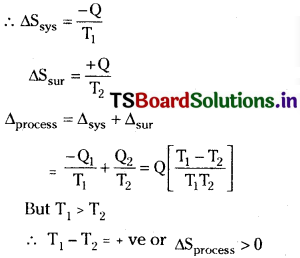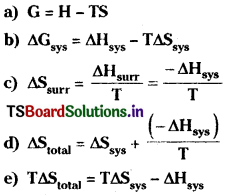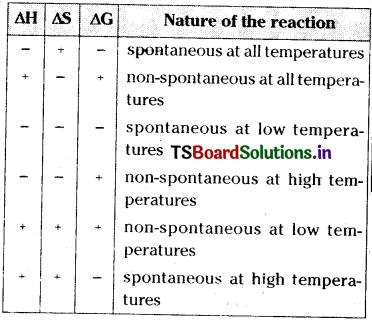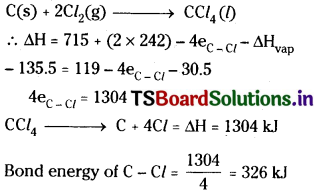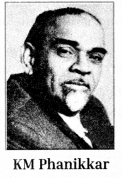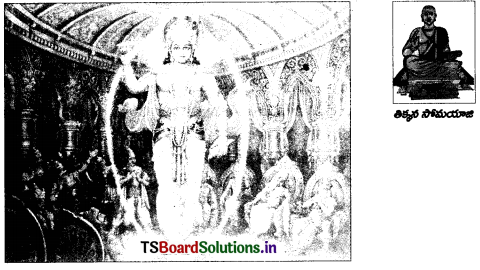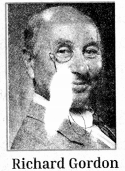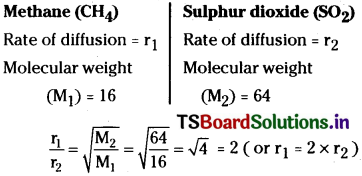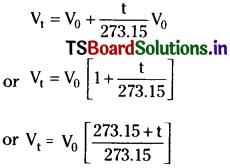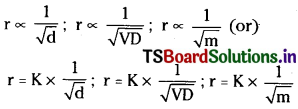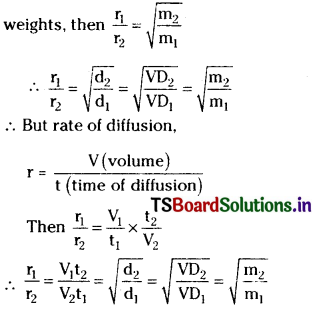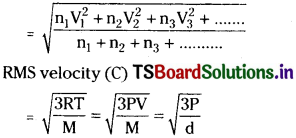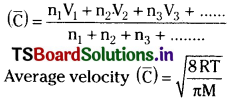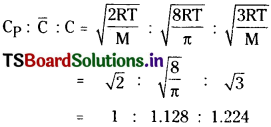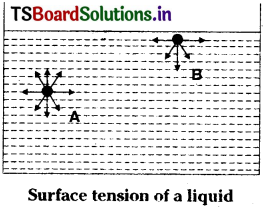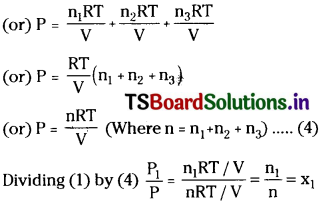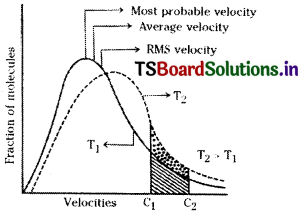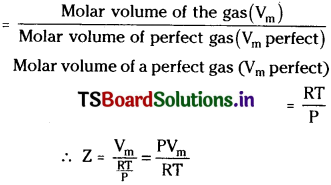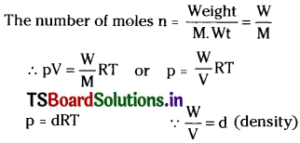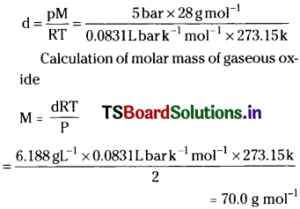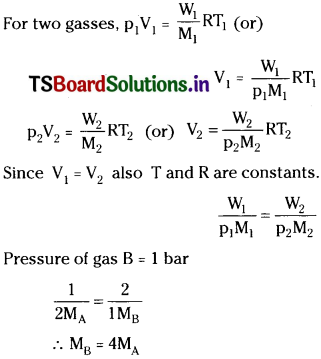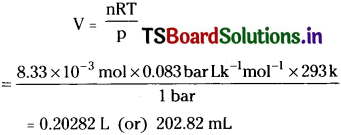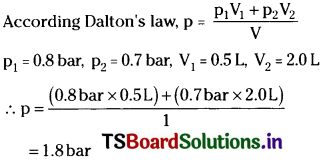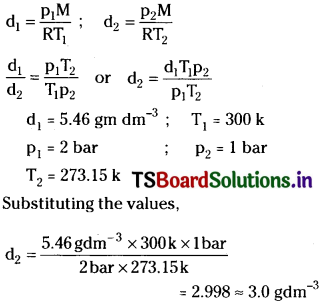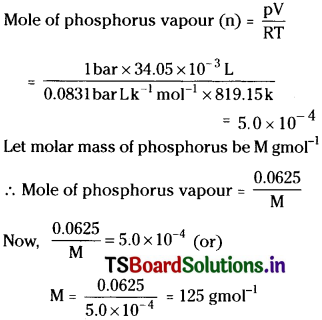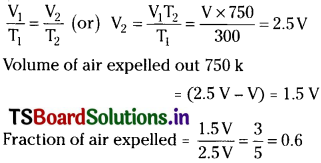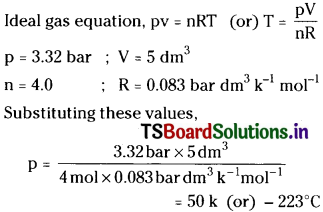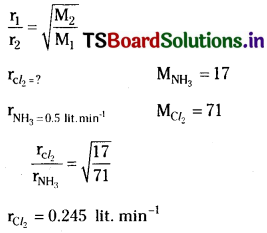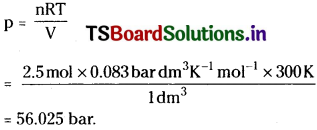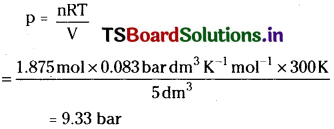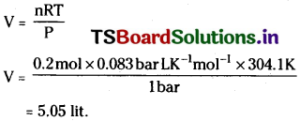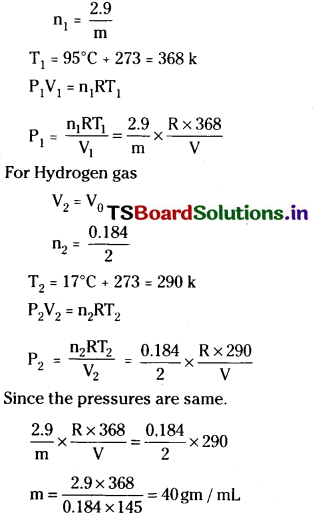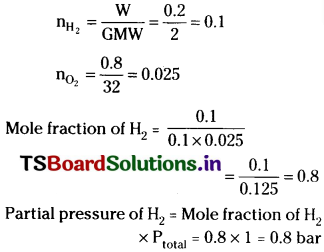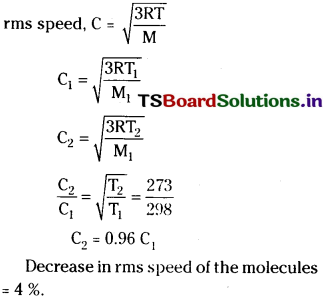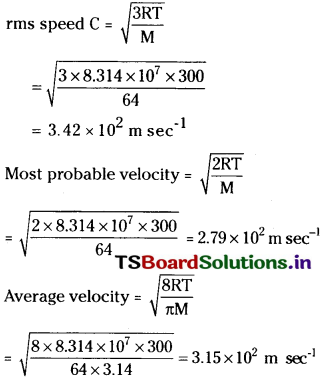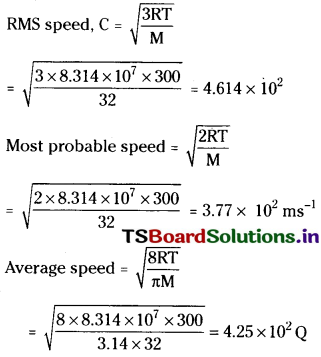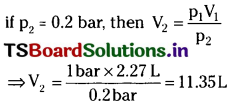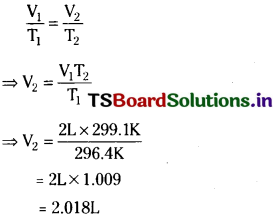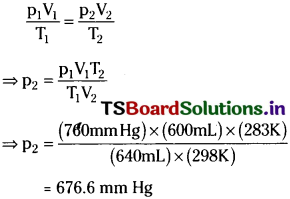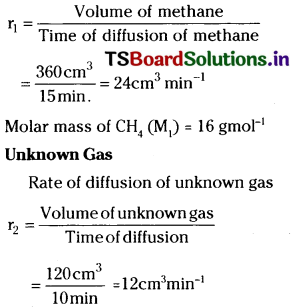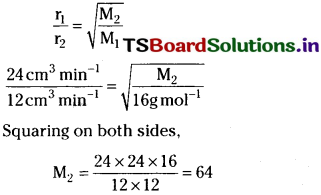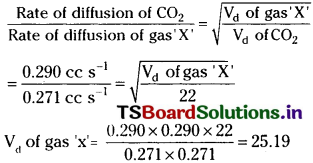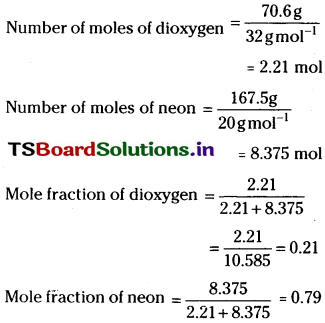Telangana TSBIE TS Inter 1st Year History Study Material 9th Lesson మొగల్ ల యుగం Textbook Questions and Answers.
TS Inter 1st Year History Study Material 9th Lesson మొగల్ ల యుగం
వ్యాసరూప సమాధాన ప్రశ్నలు
ప్రశ్న 1.
షేర్షా పరిపాలనా విధానంపై ఒక వ్యాసం రాయండి.
జవాబు.
మొగల్ పాలనా వ్యవస్థకు రూపకల్పన చేసినవాడు అక్బర్. అక్బర్కు ప్రభుత్వ విధానాల్లో షేరా కొంతవరకు మార్గదర్శి. షేర్షా విధానాలను మెరుగుపరచి, కొత్త విధానాలను ప్రవేశపెట్టి, సమర్థవంతమైన పాలకునిగా అక్బర్ చక్రవర్తి మొగల్ చరిత్రలో కీర్తి ప్రతిష్టలు సంపాదించుకున్నాడు.
కేంద్ర ప్రభుత్వం:మొగల్ పరిపాలనా యంత్రాంగానికి చక్రవర్తి సర్వాధికారి. అధికారాలన్నీ అతడి చేతిలో కేంద్రీకృతమై ఉంటాయి. మొగల్ చక్రవర్తి ప్రాజ్ఞ నిరంకుశ ప్రభువు. “నా కింది ఉద్యోగులు నిర్వహించాల్సిన బాధ్యతలను నేను నిర్వహించనవసరం లేదు. పాలకుడు కింది ఉద్యోగుల తప్పులను దిద్దుకుంటూపోతూ నివారించుకుంటే సరిపోతుంది” అని అక్బర్ చెప్పుకున్నాడు. ప్రభుత్వంలో చక్రవర్తికి (పాదుషాకు) సలహాలిచ్చేందుకు నలుగురు మంత్రులున్నారు. వారు :
- వకీల్ లేక వకీల్-ఇ-ముత్లాక్ లేక ప్రధానమంత్రి:ఇతడు చక్రవర్తికి ముఖ్య సలహాదారు. అన్ని శాఖలను పర్యవేక్షిస్తాడు.
- దివాన్ లేక వజీర్ లేక ఆర్థికమంత్రి:ఇతడు సామ్రాజ్య ఆర్థిక వనరులను పర్యవేక్షించేవాడు. భూమిశిస్తు ఇతర పన్నుల వసూలు, సామ్రాజ్య ఖర్చులు ఇతని పర్యవేక్షణలో ఉండేవి.
- మీర్భక్షి:ఇతడు యుద్ధ మంత్రి. పెద్ద ఉద్యోగులకు జీతాలను కూడా బట్వాడా చేసేవాడు. మున్సబార్ల పేర్లు, వారి హోదాలు, వారి జీతాలు ఇతడు నమోదు చేసుకొనేవాడు. రాజప్రాసాద రక్షణ నిమిత్తం గస్తీ ఉద్యోగులను నియమించేవాడు. రాష్ట్రాలలో వార్తాహరులను, గూఢచారులను నియమించటం కూడా ఇతని విధి.
- సదర్-ఉస్-సదర్:మత విషయాలలో చక్రవర్తికి సలహాలివ్వడం, చక్రవర్తి దానధర్మాలను పర్యవేక్షించటం, ముఖ్య న్యాయాధీశునిగా వ్యవహరించటం ఇతడి విధులు.
రాష్ట్ర ప్రభుత్వం:పరిపాలనా సౌలభ్యం కొరకు మొగల్ సామ్రాజ్యం సుబాలుగా విభజింపబడింది. అక్బర్ కాలంలో దాదాపు 15 సుబాలుండేవి. ఒక రకంగా వీటిని రాష్ట్రాలుగా పరిగణించవచ్చు. రాష్ట్ర పరిపాలనా వ్యవస్థ, కేంద్ర పాలనావ్యవస్థకు ప్రతిరూపం లేక ప్రతీక అని చెప్పవచ్చు. సుబాను పాలించే అధికారి సుబేదార్. సుబాలో శాంతి భద్రతలు కాపాడే బాధ్యతను సుబేదార్ నిర్వహిస్తాడు. దివాన్, భక్షి, సదర్, ఖాజీ అను అధికారులు కూడా రాష్ట్రపాలనా నిర్వహణలో బాధ్యత స్వీకరిస్తారు. వారి విధులు కేంద్ర ప్రభుత్వంలో అదే పేరుగల అధికారులు విధులను పోలి ఉంటాయి.
ప్రధాన నగరాలలో న్యాయ వ్యవహారాలను చూసేందుకు కొత్వాలు అనే ఉద్యోగి ఉండేవాడు. అతడు నగరాలలో శాంతి భద్రతలను కాపాడేవాడు. ప్రభుత్వ ఆజ్ఞలను అమలుపరిచేవాడు. విదేశీయుల కార్యకలాపాలను గమనించేవాడు. సర్కారు పాలన:”సుబాలు” సర్కారులుగా విభజింపబడ్డాయి. సర్కార్లను నేటి జిల్లాలతో పోల్చవచ్చు. సర్కార్లను పాలించడానికి ఈ క్రింది అధికార్లు ఉంటారు.
![]()
ఎ) ఫౌజార్:ఇతడు సర్కారు అధిపతి, సైనికాధికారి, తిరుగుబాట్లను అణచివేసి రెవిన్యూ అధికారులకు సహాయం చేయడం ఇతని ముఖ్య విధులు.
బి) అమల్ గుజార్:ఇతడు రెవిన్యూ శాఖాధిపతి. భూమిశిస్తు వసూలు చేయడం, ఋణాలను మంజూరు చేయడం ఇతని ముఖ్య విధులు.
సి) ఖజానాదార్:ఇతడు కోశాధికారి. వసూలైన భూమిశిస్తును ఖజానాలో భద్రపరచి కేంద్రానికి జాగ్రత్తగా పంపడం ఇతని విధి.
డి) బిలక్సి:ఇతడు భూములకు, భూమిశిస్తులకు సంబంధించిన వివరాలను తయారుచేస్తాడు.
పరగణా పాలన ; సర్కార్లు పరగణాలుగా విభజింపబడ్డాయి. ఈ క్రింది అధికారులు పరగణాల యొక్క నిర్వహించేవారు.
ఎ) షికార్: ఇతడు పరగణా యొక్క ముఖ్య కార్యనిర్వహణాధికారి. ఇతడు కూడా సైనికాధికారియే: పరగణా యొక్క శాంతిభద్రతలను పర్యవేక్షిస్తాడు.
బి) అమీన్: ఇతడు రెవిన్యూ ఉద్యోగి. భూమిశిస్తు విషయాలను నిర్వహిస్తాడు.
సి) కానుంగో: పట్వారీలపై అధికారి. ఇతడు భూములకు సంబంధించిన వివరాలను తయారుచేస్తాడు.
డి) పోద్దార్: ఇతడు పరిగణా యొక్క కోశాధికారి.
గ్రామ పాలన:పరగణాలు గ్రామాలుగా విభజింపబడ్డాయి. గ్రామం పరిపాలనా వ్యవస్థలో తుది అంశము. ముఖద్దమ్, పట్వారీలు గ్రామాధికారులు. ముఖద్దమ్ శాంతిని పర్యవేక్షిస్తాడు. పట్వారీ భూమిశిస్తు వివరాలను తయారు చేస్తాడు. గ్రామాలలో పంచాయితీ విధానం అమలులో ఉండేది. పంచాయితీలు న్యాయనిర్వహణ బాధ్యతలను నిర్వహించేవి.
సైనికపాలన:మొగల్ చక్రవర్తులు సమర్థవంతమైన సైన్యమును పోషించిరి. వీరి సైనిక విధానమును ‘మున్సబ్రీ’ విధానమందురు. ‘మున్సబ్’ అంటే ‘హోదా’ లేదా ‘ఉద్యోగం’ అని అర్థం. ఒక విధముగా ఢిల్లీ సుల్తానుల జాగీర్దార్ విధానం వంటిది.
ఆర్థిక విధానం:మొగలుల ఆర్థిక విధానం సమర్థవంతమైనది. ఖరాజ్, ఖమ్స్, జకాత్, జిజియా అనే నాలుగు రకాల పన్నులు వసూలు చేసిరి.
భూమిశిస్తు విధానం:మొగలుల భూమిశిస్తు విధానానికి పూర్తి రూపాన్ని కల్గించినవారు అక్బర్ మరియు ఆయన రెవిన్యూ మంత్రి రాజాతోడరమల్. మొగలుల భూమిశిస్తు విధానంను ‘బందోబస్త్’ విధానమందురు. న్యాయపాలన:చక్రవర్తితో కూడిన న్యాయమండలి మొగల్ రాజ్యంలో అత్యున్నత న్యాయస్థానం. అతి ముఖ్యమైన వివాదాలను ఈ న్యాయస్థానమే పరిష్కరించేది. చక్రవర్తియే ఉన్నత న్యాయాధీశుడు. ఉద్యోగులలో ప్రధాన ఖాజీ ఉన్నత న్యాయాధికారి. అతడు దిగువ న్యాయస్థానాల యొక్క న్యాయాధిపతులను నియమించేవాడు. ఆ న్యాయస్థానాల నుండి వచ్చే అప్పీళ్లను కూడా ప్రధాన ఖాజీ విచారించేవాడు. చీఫ్ సదర్ మత వివాదాలను పరిష్కరించేవాడు. రాష్ట్రాలలో (సుబాలలో) సదర్ క్రిమినల్ కేసులను, దివాన్ రెవిన్యూ వివాదాలను, ఖాజీ సివిల్ కేసులను పరిష్కరించే వారు. సర్కార్లలో ఫౌజార్లు, ఖాజీలు, పరగణాలలో షికార్లు, అమీన్లు న్యాయనిర్ణేతలుగా వ్యవహరించేవారు. గ్రామ స్థాయిలో గ్రామ పంచాయితీలు నేర విచారణ చేసేవి.
ముగింపు:మొగలుల పాలనా విధానము ఉదారమైనది, సమర్థవంతమైనది. ప్రజాక్షేమాన్ని కాంక్షించేది. మహమ్మదీయుల పరిపాలనా వ్యవస్థ మొదటిసారిగా మొగలుల కాలంలోనే ఔన్నత్యాన్ని పొందింది.
ప్రశ్న 2.
మొగల్ పరిపాలన ముఖ్య లక్షణాలు చర్చించండి.
జవాబు.
మొగల్ పాలనా వ్యవస్థకు రూపకల్పన చేసినవాడు అక్బర్. అక్బర్కు ప్రభుత్వ విధానాల్లో షేరా కొంతవరకు మార్గదర్శి. షేర్షా విధానాలను మెరుగుపరచి, కొత్త విధానాలను ప్రవేశపెట్టి సమర్థవంతమైన పాలకునిగా అక్బర్ చక్రవర్తి మొగల్ చరిత్రలో కీర్తి ప్రతిష్టలు సంపాదించుకున్నాడు.
కేంద్ర ప్రభుత్వం:మొగల్ పరిపాలనా యంత్రాంగానికి చక్రవర్తి సర్వాధికారి. అధికారాలన్నీ అతడి చేతిలో కేంద్రీకృతమై ఉంటాయి. మొగల్ చక్రవర్తి ప్రాజ్ఞ నిరంకుశ ప్రభువు. నా కింది ఉద్యోగులు నిర్వహించాల్సిన బాధ్యతలను నేను నిర్వహించనవసరం లేదు. పాలకుడు కింది ఉద్యోగుల తప్పులను దిద్దుకుంటూపోతూ తాను చేసే తప్పులను నివారించుకుంటే సరిపోతుంది” అని అక్బర్ చెప్పుకున్నాడు. ప్రభుత్వంలో చక్రవర్తికి (పాదుషాకు) సలహాలిచ్చేందుకు నలుగురు మంత్రులున్నారు. వారు:
- వకీల్ లేక వకీల్-ఇ-ముత్లాక్ లేక ప్రధానమంత్రి:ఇతడు చక్రవర్తికి ముఖ్య సలహాదారు. అన్ని శాఖలను పర్యవేక్షిస్తాడు.
- దివాన్ లేక వజీర్ లేక ఆర్థికమంత్రి:ఇతడు సామ్రాజ్య ఆర్థిక వనరులను పర్యవేక్షించేవాడు. భూమిశిస్తు ఇతర పన్నుల వసూలు, సామ్రాజ్య ఖర్చులు ఇతని పర్యవేక్షణలో ఉండేవి.
- మీర భక్షి:ఇతడు యుద్ధ మంత్రి. పెద్ద ఉద్యోగులకు జీతాలను కూడా బట్వాడా చేసేవాడు. మున్సబార్లా పేర్లు, వారి హోదాలు, వారి జీతాలు ఇతడు నమోదు చేసుకొనేవాడు. రాజప్రాసాద రక్షణ నిమిత్తం గస్తీ ఉద్యోగులను నియమించేవాడు. రాష్ట్రాలలో వార్తాహరులను, గూఢచారులను నియమించటం కూడా ఇతని
విధి. - సదర్-ఉన్-సదర్:మత విషయాలలో చక్రవర్తికి సలహాలివ్వడం చక్రవర్తి దానధర్మాలను పర్యవేక్షించటం, ముఖ్య న్యాయాధీశునిగా వ్యవహరించటం ఇతడి విధులు.
రాష్ట్ర ప్రభుత్వం:పరిపాలనా సౌలభ్యం కొరకు మొగల్ సామ్రాజ్యం సుబాలుగా విభజింపబడింది. అక్బర్ కాలంలో దాదాపు 15 సుబాలుండేవి. ఒక రకంగా వీటిని రాష్ట్రాలుగా పరిగణించవచ్చు. రాష్ట్ర పరిపాలనా వ్యవస్థ, కేంద్ర పాలనావ్యవస్థకు ప్రతిరూపం లేక ప్రతీక అని చెప్పవచ్చు. సుబాను పాలించే అధికారి సుబేదార్. సుబాలో శాంతి భద్రతలు కాపాడే బాధ్యతను సుబేదార్ నిర్వహిస్తాడు. దివాన్, భక్షి, సదర్, ఖాజీ అను అధికారులు కూడా రాష్ట్రపాలనా నిర్వహణలో బాధ్యత స్వీకరిస్తారు. వారి విధులు కేంద్ర ప్రభుత్వంలో అదే పేరుగల అధికారులు విధులను పోలి ఉంటాయి.
ప్రధాన నగరాలలో న్యాయ వ్యవహారాలను చూసేందుకు కొత్వాలు అనే ఉద్యోగి ఉండేవాడు. అతడు నగరాలలో శాంతి భద్రతలను కాపాడేవాడు. ప్రభుత్వ ఆజ్ఞలను అమలు పరిచేవాడు. విదేశీయుల కార్యకలాపాలను గమనించేవాడు. సర్కారు పాలన:“సుబాలు” సర్కారులుగా విభజింపబడ్డాయి. సర్కార్లను నేటి జిల్లాలతో పోల్చవచ్చు. సర్కార్లను పాలించడానికి ఈ క్రింది అధికార్లు ఉంటారు.
ఎ) ఫౌజార్: ఇతడు సర్కారు అధిపతి, సైనికాధికారి, తిరుగుబాట్లను అణచివేసి రెవిన్యూ అధికారులకు సహాయం చేయడం ఇతని ముఖ్య విధులు.
బి) అమల్ గుజార్: ఇతడు రెవిన్యూ శాఖాధిపతి. భూమిశిస్తు వసూలు చేయడం, ఋణాలను మంజూరు చేయడం ఇతని ముఖ్య విధులు.
సి) ఖజానాదార్: ఇతడు కోశాధికారి. వసూలైన భూమిశిస్తును ఖజానాలో భద్రపరచి కేంద్రానికి జాగ్రత్తగా పంపడం ఇతని విధి.
డి) బిలక్సీ: ఇతడు భూములకు, భూమిశిస్తులకు సంబంధించిన వివరాలను తయారుచేస్తాడు.
![]()
పరగణా పాలన: సర్కార్లు పరగణాలుగా విభజింపబడ్డాయి. ఈ క్రింది అధికారులు పరగణాల యొక్క పరిపాలనను నిర్వహించేవారు.
ఎ) షికార్:ఇతడు పరగణా యొక్క ముఖ్య కార్యనిర్వహణాధికారి. ఇతడు కూడా సైనికాధికారియే. పరగణా యొక్క శాంతిభద్రతలను పర్యవేక్షిస్తాడు.
బి) అమీన్:ఇతడు రెవిన్యూ ఉద్యోగి. భూమిశిస్తు విషయాలను నిర్వహిస్తాడు.
సి) కానుంగో:పట్వారీల-పై అధికారి. ఇతడు భూములకు సంబంధించిన వివరాలను తయారుచేస్తాడు.
డి) పోద్దార్:ఇతడు పరిగణా యొక్క కోశాధికారి.
గ్రామ పాలన:పరగణాలు గ్రామాలుగా విభజింపబడ్డాయి. గ్రామం పరిపాలనా వ్యవస్థలో తుది అంశము. ముఖద్దమ్, పట్వారీలు గ్రామాధికారులు. ముఖద్దమ్ శాంతిని పర్యవేక్షిస్తాడు. పట్వారీ భూమిశిస్తు వివరాలను తయారు చేస్తాడు. గ్రామాలలో పంచాయితీ విధానం అమలులో ఉండేది. పంచాయితీలు న్యాయనిర్వహణ బాధ్యతలను నిర్వహించేవి.
సైనిక పాలన:మొగల్ చక్రవర్తులు సమర్థవంతమైన సైన్యమును పోషించిరి. వీరి సైనిక విధానమును ‘మున్సబారీ’ విధానమందురు. ‘మున్సబ్’ అంటే ‘హోదా’ లేదా ‘ఉద్యోగం’ అని అర్థం. ఒక విధముగా ఢిల్లీ సుల్తానుల జాగీర్దార్ విధానం వంటిది.
ఆర్థిక విధానం:మొగలుల ఆర్థిక విధానం సమర్థవంతమైనది. ఖరాజ్, ఖమ్స్, జకాత్, జిజియా అనే నాలుగు రకాల పన్నులు వసూలు చేసిరి.
భూమిశిస్తు విధానం:మొగలుల భూమిశిస్తు విధానానికి పూర్తి రూపాన్ని కల్గించినవారు అక్బర్ మరియు ఆయన రెవిన్యూ మంత్రి రాజాతోడర్మల్. మొగలుల భూమిశిస్తు విధానంను ‘బందోబస్త్’ విధానమందురు.
న్యాయపాలన:చక్రవర్తితో కూడిన న్యాయమండలి మొగల్ రాజ్యంలో అత్యున్నత న్యాయస్థానం. అతి ముఖ్యమైన వివాదాలను ఈ న్యాయస్థానమే పరిష్కరించేది. చక్రవర్తియే ఉన్నత న్యాయాధీశుడు. ఉద్యోగులలో ప్రధాన ఖాజీ ఉన్నత న్యాయాధికారి. అతడు దిగువ న్యాయస్థానాల యొక్క న్యాయాధిపతులను నియమించేవాడు. ఆ న్యాయస్థానాల నుండి వచ్చే అప్పీళ్లను కూడా ప్రధాన ఖాజీ విచారించేవాడు. చీఫ్ సదర్ మత వివాదాలను పరిష్కరించేవాడు. రాష్ట్రాలలో (సుబాలలో) సదర్ క్రిమినల్ కేసులను, దివాన్ రెవిన్యూ వివాదాలను, ఖాజీ సివిల్ కేసులను పరిష్కరించేవారు. సర్కార్లలో ఫౌజ్దార్లు, ఖాజీలు, పరగణాలలో షికార్లు, అమీన్లు న్యాయనిర్ణేతలుగా వ్యవహరించేవారు. గ్రామస్థాయిలో గ్రామ పంచాయితీలు నేర విచారణ చేసేవి.
ముగింపు:మొగలుల పాలనా విధానము ఉదారమైనది, సమర్థవంతమైనది. ప్రజాక్షేమాన్ని కాంక్షించేది. మహమ్మదీయుల పరిపాలనా వ్యవస్థ మొదటిసారిగా మొగలుల కాలంలోనే ఔన్నత్యాన్ని పొందింది.
ప్రశ్న 3.
మొగల్ సామ్రాజ్య పతనానికి ఔరంగజేబు ఎంతవరకు బాధ్యుడు ?
జవాబు.
ఔరంగజేబు (క్రీ.శ. 1658 – 1707):సమర్థులైన మొగల్ చక్రవర్తులలో ఔరంగజేబు ఒకడు. “అలంగీర్” (ప్రపంచ విజేత) అనే బిరుదు ధరించి సింహాసనానికి వచ్చాడు. ఇతడి మొదటి పది సంవత్సరాల పాలనలో అనేక విజయాలు సాధించాడు. చిన్న చిన్న తిరుగుబాట్లను అణచివేశాడు. కాని పాలన చివరి రోజుల్లో అనేక కష్టాలను ఎదుర్కొన్నాడు. జాట్లు, సత్నామీలు, సిఖ్ు అతనికి వ్యతిరేకంగా తిరుగుబాట్లు చేశారు. ఇతడి సంకుచిత మత దురభిమానం మూలంగానే ఈ తిరుగుబాట్లు జరిగాయి.
దక్కన్ విధానం:మొగలుల దక్కన్ విధానం అక్బర్తో ప్రారంభమైంది. ఖాందేశ్, బెరార్లను ఆక్రమించాడు. జహాంగీర్ అహ్మద్ నగర్ మంత్రి మాలిక్ అంబర్కు వ్యతిరేకంగా యుద్ధం చేశాడు. షాజహాన్ కాలంలో దక్కన్ గవర్నర్గా ఉన్న ఔరంగజేబు దక్కన్ రాజ్యాల పట్ల దుడుకైన విధానాన్ని అనుసరించాడు. కాని జౌరంగజేబు చక్రవర్తైన మొదటి అయిదు సంవత్సరాలు తన దృష్టిని పూర్తిగా పశ్చిమోత్తర సరిహద్దుపై కేంద్రీకరించాడు.
ఇదే సమయంలో మరాఠా నాయకుడు శివాజీ ఉత్తర, దక్షిణ కొంకణ్ణను జయించి స్వతంత్ర మరాఠా రాజ్యాన్ని ఏర్పాటు చేశాడు. మరాఠాల విజృంభణను అరికట్టడానికి ఔరంగజేబు బీజాపూర్, గోల్కొండ రాజ్యాలపై దండయాత్ర చేశాడు. సికిందర్షాను ఓడించి బీజాపూర్ను ఆక్రమించాడు. కుతుబ్షాహి సుల్తానును 1687లో ఓడించి గోల్కొండను ఆక్రమించాడు. దక్కన్ రాజ్యాలను ఆక్రమించడం ఔరంగజేబు చేసిన రాజకీయ తప్పిదం. దీనివల్ల మొగలులకు, మరాఠాలకు మధ్య ఉన్న ఆటంకం తొలగిపోయింది. మహారాష్ట్రులు ప్రత్యక్షంగా తమ బలాన్ని మొగలులపై కేంద్రీకరించడానికి మార్గం ఏర్పడింది. ఇతడి దక్కన్ విధానం మొగల్ సామ్రాజ్యానికి అపార నష్టాన్ని కలిగించింది. జాదునాధ్ సర్కార్ “దక్కన్ పుండు (ulcer) ఔరంగజేబును నాశనం చేసింది” అన్నాడు.
మత విధానం:ఔరంగజేబుకు సనాతన సున్నీ మతంలో విశ్వాసం కలదు. మహసీబ్ అనే అధికారి ఆధ్వర్యంలో ఒక ప్రత్యేక శాఖను ఏర్పాటు చేసి, ప్రజలు నైతిక పత్రాలను పాటించేటట్లు కృషి చేశాడు. మద్యపానాన్ని నిషేధించాడు. భంగ్, మత్తు పదార్థాలను నిషేధించాడు. ఆస్థానంలో సంగీతాన్ని నిషేధించాడు. “తులాదానం” (చక్రవర్తిని వెండి, బంగారంతో తూకం వేయడం ఝరోకా దర్శనం” (చక్రవర్తి ప్రజాదర్శనం) వంటి ఆచారాలను నిలిపేశాడు. దీపావళి, దసరా, నౌరోజ్ పండుగలను జరుపరాదన్నాడు. జ్యోతిష్యులను ఆస్థానం నుంచి బహిష్కరించాడు.
![]()
ఔరంగజేబు మొదట కొత్త దేవాలయాల నిర్మాణాన్ని, పాత దేవాలయాల మరమ్మత్తును నిషేధించాడు. తరువాత సంవత్సరంలో హిందూ దేవాలయాలను కూల్చివేయాలని ఆదేశించాడు. మధుర, బెనారస్ లోని ‘దేవాలయాలు కూల్చివేయబడ్డాయి. ఔరంగజేబు 1679లో జిజియా పన్నును, తీర్థయాత్రికుల పన్నును తిరిగి విధించాడు. మహ్మదీయులలోని ఇతర శాఖల వారిపై కూడా మత వ్యతిరేకతను ప్రదర్శించాడు. మొహర్రం పండుగను నిషేధించాడు. షియా మతస్తులనే కారణంపై ఔరంగజేబు దక్కన్ రాజ్యాలపై దండయాత్ర చేశాడు. సిఖ్ తొమ్మిదవ మత గురువు గురు తేజ్బహదూర్ను చంపించాడు. దీనితో సిబ్లు సైన్యంగా ఏర్పడి మొగలాయిలతో నిరంతరం పోరాడారు.
ఔరంగజేబు మత విధానం వల్ల రాజపుత్రులు, మహారాష్ట్రులు, సిబ్లు మొగల్ సామ్రాజ్యానికి శతృవులుగా మారారు. మధుర జాట్లు, మేవార్ సత్నామీలు ఔరంగజేబు మత విధానం మూలంగా తిరుగుబాటు చేశారు. అందుకే మొసలి సామ్రాజ్య పతనానికి ఔరంగజేబు అనుసరించిన మత విధానం కూడా ఒక కారణంగా పేర్కొంటారు. ఔరంగజేబు వ్యక్తిత్వం, శీలం:ఔరంగజేబు వ్యక్తిగత జీవితం చాలా ఆదర్శప్రాయమైంది. ఇతడు క్రమశిక్షణ, కష్టపడి పని చేసే స్వభావం కలవాడు. ఆహార పానీయాలు, వస్త్రధారణ విషయంలో చాలా నిరాడంబరంగా జీవించాడు. విలాసాలకు దూరంగా ఉండేవాడు. తన వ్యక్తిగత ఖర్చుల కోసం ఖురాన్కు నకళ్ళురాసి, వాటిని అమ్మించేవాడు. మద్యపానం సేవించేవాడుకాదు. అరబ్బీ, పార్శీ భాషల్లో మంచి ప్రావీణ్యత కలదు. గ్రంథపఠనం చేసేవాడు. దైవభీతి కలిగిన మహ్మదీయుడిగా ఔరంగజేబు ప్రతిరోజు అయిదు సార్లు నమాజ్ చేసేవాడు. రంజాన్ ఉపవాసాలకు తు.చ. తప్పకుండా పాటించేవాడు.
ఔరంగజేబు రాజకీయ విషయాల్లో కొన్ని తీవ్రమైన తప్పిదాలు చేశాడు. మరాఠాల ఉద్యమ స్వభావాన్ని తప్పుగా అర్థం చేసుకోవడం వల్ల వారు ఔరంగజేబుకు విరోధులైనారు. మరాఠాల సమస్యలను పరిష్కరించలేకపోయాడు. దక్కన్ సుల్తానుల పట్ల అతడి విధానం కూడా పెద్ద నష్టాన్ని కలిగించాయి.
ఔరంగజేబు మత విధానం కూడా ఒక అనాలోచితమైన చర్య. తన సున్నీ మతసూత్రాలను మహ్మదీయేతరులపైన బలవంతంగా రుద్దడానికి ప్రయత్నించాడు. మహ్మదీయులు సైతం అతన్ని సమర్థించలేదు. పైగా వారు మొగల్ సామ్రాజ్యానికి వ్యతిరేకులైనారు.
ప్రశ్న 4.
మొగల్ యుగం నాటి సాంఘిక, ఆర్థిక, సాంస్కృతిక పరిస్థితులపై వ్యాసం రాయండి.
జవాబు.
మొగల్ల కాలంనాటి సాంఘిక పరిస్థితులు:మొగల్ యుగం నాటి సమాజంలో హిందువులు, ఆఫ్ఘన్లు, ఇరానియన్లు, మంగోళులు, టర్క్లు, సిఖిు, క్రిస్టియన్లు మొదలైన వర్గాలవారు జీవించేవారు. పూర్వం కంటే మొగలుల నాటి సామాజిక వ్యవస్థ చాలా సరళంగా ఉంది. సమాజంలో మూడు ప్రధాన వర్గాలుండేవి. అవి రాజకుటుంబం, ప్రభువులు, మధ్యతరగతి వర్గం, సామాజిక వ్యవస్థలో చివరి వర్గం సామాన్యులు. జనాభాలో అధిక సంఖ్యాకులు వీరే. సామాన్యులు వ్యవసాయం, పరిశ్రమలు, ధనవంతుల ఇండ్లలో పని చేసేవారు. హిందువులు, మహ్మదీయులిద్దరికి జ్యోతిష్యం, శకునాలలో విశ్వాసం కలదు. బాల్యవివాహాలు, సతీసహగమనం, వరకట్నం, బహు భార్యత్వం మొదలైనవి ఆనాటి సామాజిక దురాచారాలు. నౌరోజ్, రంజాన్, షబ్బేబరాత్, దసరా, హోళి, దివాళి మొదలైనవి ఆనాటి ముఖ్యమైన పండుగలు. హిందూ-ముస్లిం పండుగలతోపాటు పాదుషా జన్మదినాన్ని కూడా జరుపుకొనేవారు. ప్రభువులు, రాజ కుటుంబీకుల సరదా కోసం ప్రత్యేక దుకాణ మేళాలను నిర్వహించేవారు. వీటిని నుమా-బజార్లు, ఖుషి బజార్లు అని
పిలిచేవారు.
మొగల్ల నాటి ఆర్థిక వ్యవస్థ:మొగలుల కాలంలో దేశం ఆర్థికంగా చాలా పరిపుష్టంగా ఉండేది. వ్యవసాయం, వాణిజ్యం, చేతివృత్తులు ఉన్నత స్థితిలో ఉండేవి. వ్యవసాయం, వాణిజ్యాభివృద్ధి కోసం మొగలులు అనేక చర్యలు తీసుకొన్నారు. ఆహారధాన్యాల పంటలను, వాణిజ్య పంటలను ప్రోత్సహించారు. బెంగాల్, బీహార్, ఉత్తరప్రదేశు చెరకు పంటకు, బెంగాల్, గుజరాత్, దక్కన్లు పత్తిసాగుకు పేరుగాంచాయి. ఇండిగో, పప్పుధాన్యాలు, నల్లమందు మొదలైన వాటిని కూడా కొన్ని ప్రాంతాల్లో పండించేవారు. జౌళి, ఇనుము – ఉక్కు, తివాచీలు, గాజు, సుగంధ పరిమళాలు, కలంకారీ మొదలైన పరిశ్రమలు బెంగాల్, గుజరాత్, కాశ్మీర్, ఢాకా, మచిలీపట్నంలో విలసిల్లాయి. అంతర్గత వ్యాపారాన్ని స్థానిక వ్యాపారులే నిర్వహించేవారు. భూమార్గ వ్యాపారానికి ఎద్దులు, గాడిదలు, ఒంటెలు, ఎద్దుల బండ్లను ఉపయోగించేవారు. మసాలా దినుసులు, ప్రత్తి, వస్త్రాలు, మిరియాలు, వజ్రాలు మొదలైనవి ఆనాటి ముఖ్యమైన ఎగుమతులు. విదేశీ వ్యాపారం గోవా, హుగ్లీ, కలకత్తా, మచిలీపట్నం ద్వారా జరిగేది. గాజు సామగ్రి, చక్కెర, అశ్వాలు, బానిసలను పర్షియా మధ్య ఆసియా నుంచి దిగుమతి చేసుకొనేవారు.
మొగలుల నాటి సాంస్కృతికాభివృద్ధి:మొగల్ యుగంలో భారతదేశం సాంస్కృతికంగా అద్భుతమైన ప్రగతిని సాధించింది. కళలు, వాస్తు నిర్మాణం, చిత్రలేఖనం, సంగీతం, సాహిత్యం మొదలైన అన్ని రంగాలలో ప్రస్ఫుటమైంది. మొగలులు భారతదేశంలో టర్కీ-పర్షియన్ సంప్రదాయాలను ప్రవేశపెట్టగా, ఇందులో భారతీయ సంప్రదాయం కూడా మేళమించబడింది.
ప్రశ్న 5.
మొగలుల సాంస్కృతిక సేవను వివరించండి.
జవాబు.
మొగలుల నాటి సాంస్కృతికాభివృద్ధి:మొగల్ యుగంలో భారతదేశం సాంస్కృతికంగా అద్భుతమైన ప్రగతిని సాధించింది. కళలు, వాస్తు నిర్మాణం, చిత్రలేఖనం, సంగీతం, సాహిత్యం మొదలైన అన్ని రంగాలలో ప్రస్ఫుటమైంది. మొగలుల భారతదేశంలో టర్కీ-పర్షియన్ సంప్రదాయాలను ప్రవేశపెట్టగా, ఇందులో భారతీయ సంప్రదాయం కూడా మేళమించబడింది.
వాస్తుకళ:మొగలుల వాస్తు నిర్మాణాలలో విశాలమైన కోటలు, రాజభవనాలు, ప్రజలందరు ఉపయోగించుకొనే కట్టడాలు, మసీదులు, సమాధులు మొదలైనవెన్నో కలవు. ఎప్పుడూ నీరు అందుబాటులో ఉండే విధంగా ఉద్యానవనాలను ఏర్పాటు చేశారు. కాశ్మీర్ లోని నిషాత్బాగ్, లాహోర్ లోని షాలిమార్, పంజాబ్లో ని పింజోర్ ఉద్యానవనం మొదలైన మొగలుల ఉద్యానవనాలు నేటికి కూడా సజీవంగా ఉన్నాయి. షేర్షా బీహార్లోని ససారాం వద్ద తన కోసం నిర్మించుకొన్న సమాధి, ఢిల్లీలోని పురానా ఖిలాలోని మసీదు మధ్యయుగ వాస్తు కళారంగంలో అద్భుతాలుగా పరిగణించ బడ్డాయి.
అక్బర్ కాలం నుంచి పెద్ద ఎత్తున భవనాల నిర్మాణం ప్రారంభమైంది. అక్బర్ చాలా కోటలను నిర్మించాడు. అందులో ముఖ్యమైంది ఆగ్రా కోట. ఇది ఎర్రటి ఇసుక రాయితో నిర్మించబడింది. అక్బర్ లాహోర్, అలహాబాద్లో ఇతర కోటలను నిర్మించాడు. .ఢిల్లీలో షాజహాన్ నిర్మించిన ఎర్రకోట కోటల నిర్మాణ రీతిలో అత్యంత విశిష్టమైంది. ఇందులోని రంగమహల్, దివాన్-ఇ-ఆమ్, దివాన్-ఇ-ఖాస్లు కూడా ఇతని నిర్మాణాలే.
అక్బర్ కూడా ఫతేపూర్ సిక్రీ వద్ద రాజభవనం – కోటల సముదాయం నిర్మించాడు. ఇది ఆగ్రాకు 36 కి.మీ. దూరంలో కలదు. గుజరాత్, బెంగాలీ నిర్మాణ శైలి అందులో ప్రతిబింబిస్తుంది. గుజరాత్ నిర్మాణ శైలిని రాజపుత్ర రాణుల కోసం నిర్మించిన భవనాలలో వినియోగించాడు. కాని అన్నింటికంటే ముఖ్యమైన నిర్మాణం మాత్రం అక్కడి జమా మసీదు, ఫతేపూర్ సిక్రీకి ద్వారమైన బులంద్ దర్వాజా. దీని ఎత్తు 176 అడుగులు. అక్బర్ గుజరాత్ విజయానికి చిహ్నంగా దీనిని నిర్మించాడు. ఫతేపూర్ సిక్రీలోని ఇతర ముఖ్యమైన భవనాలలో జోధాభాయి రాజభవనం, అయిదు అంతస్థులతో ఉన్న పంచమహల్ కలవు.
అక్బర్ కాలంలో ఢిల్లీలో హుమాయూన్ సమాధి నిర్మించబడింది. దీని భారీ గుమ్మటం పాలరాతితో నిర్మించబడింది. అందుకే దీనిని తాజ్మహల్కు పూర్వపు రూపంగా భావిస్తారు. ఆగ్రా సమీపంలో సికింద్రా వద్ద అక్బర్ సమాధిని జహంగీర్ పూర్తి చేశాడు. భవన నిర్మాణ కళలో తాజ్మహల్ ఒక అద్భుతంగా నిలిచిపోయింది. మొగలులు అభివృద్ధి పరచిన అన్ని వాస్తు కళాశైలుల సమ్మేళనమే తాజ్మహల్. తాజ్మహల్ అందానికి కారణం దాని విశాలమైన పాలరాతి గోపురం, నాలుగు సన్నటి మినార్లు. అందమైన తోట మధ్యలో నిర్మితం కావడంతో ఆ కట్టడానికి ఎనలేని అందం తెచ్చిపెట్టింది.
షాజహాన్ పాలనలో మసీదుల నిర్మాణం కూడా ఉన్నత దశకు చేరుకొంది. ఆగ్రా కోటలో పాలరాతితో మోతి మసీదు నిర్మించబడింది. ఢిల్లీలో జామా మసీదు ఎర్రటి ఇసుక రాయితో నిర్మించబడింది.
చిత్రలేఖనం, సంగీతం: చిత్రకళారంగానికి మొగలులు చెప్పుకోదగిన కృషి చేశారు. మొగలుల చిత్రకళకు పునాదులు వేసినవాడు హుమాయూన్. అక్బర్ అనేక సాహిత్య, మత గ్రంథాలకు చిత్రీకరణలు వేయించాడు. అక్బర్ దేశంలోని వివిధ ప్రాంతాల నుంచి ప్రతిభావంతులైన చిత్రకారులను ఆహ్వానించాడు.
జహాంగీర్ కాలంలో మొగల్ చిత్రలేఖనం ఉన్నత శిఖరాలకు చేరుకొంది. అబ్దుల్సమద్, బిషన్దాస్, మధు, అనంత్, మనోహర్, గోవర్థన్, ఉస్తాద్ మన్సూర్ లాంటి ఎంతోమంది చిత్రకారులను జహంగీర్ నియమించుకొన్నాడు. వేట, యుద్ధం, ఆస్థాన దృశ్యాలు, చిత్రలేఖనంతో పాటు వ్యక్తిగత చిత్రాల లేఖణన ప్రక్రియ (Portrait painting) జంతువుల చిత్రలేఖనం అభివృద్ధి చెందాయి. చిత్రాలు, దస్తూరి (Calligraphy) లతో కూడిన అనేక ఆల్బమ్లు మొగలుల కాలంలో రూపొందించబడ్డాయి. తరువాత కాలంనాటి చిత్రకళపై యూరప్ చిత్రలేఖనం ప్రభావం కన్పిస్తుంది. మొగలుల కాలంలో సంగీతం కూడా అభివృద్ధి చెందింది. అక్బర్ ఆస్థానంలో గ్వాలియర్కు చెందిన తాన్సేన్ అనే గొప్ప గాయకుడుండేవాడు. తాన్సేన్ గోరా, సనమ్ మొదలైన రాగాలకు స్వరాలెన్నింటినో కూర్పు చేశాడు. జహంగీర్, షాజహాన్లకు కూడా సంగీతంలో ప్రవేశం ఉండేది.
![]()
లఘు సమాధాన ప్రశ్నలు
ప్రశ్న 1.
అక్బర్ రాజపుత్ర విధానాన్ని వివరించండి.
జవాబు.
రాజపుత్రులతో సంబంధాలు:అక్బర్ అనుసరించిన రాజపుత్ర విధానం ప్రసిద్ధమైంది. ఇతడు అంబర్రాజు రాజా భారామల్ కుమార్తెను వివాహమాడాడు. అక్బర్ అనేక రాజపుత్ర రాజ్యాలతో వివాహ సంబంధాలను ఏర్పాటు చేసుకొన్నాడు. ఇది మొగల్ చరిత్రలోనే ఒక ముఖ్యమైన మలుపు అని చెప్పవచ్చు. రాజపుత్రులు మొగలాయిలకు సేనాధిపతులుగా, మంత్రులుగా సేవలందించారు. రాజా భగవాన్ దాస్, రాజామాన్ సింగ్, రాజాతోడరమల్లను అక్బర్ సేనాధిపతులుగా నియమించుకొన్నాడు. జైసల్మీర్, బికనేర్, రణతంభోర్ మొదలైన రాజపుత్ర రాజ్యాలు అక్బర్కు లొంగిపోయాయి. కాని మేవార్ను పాలిస్తున్న రాణా ఉదయ సింహుడు, అతని కుమారుడు రాణా ప్రతాప సింహుడు అక్బర్ను ఎదిరించారు. 1576లో జరిగిన హాల్దీఘాట్ యుద్ధంలో రాణాప్రతాపసింహుడిని అక్బర్ సైన్యాధిపతి రాజామాన్ సింగ్ ఓడించాడు. మేవార్ ఓటమి తరువాత అనేక రాజపుత్ర రాజ్యాలు అక్బర్ సార్వభౌమత్వాన్ని అంగీకరించాయి.
అక్బర్ రాజపుత్ర విధానం అతడి విశాలమైన పరమత సహనంతో ముడిపడి ఉంది. అతడు తీర్థయాత్రల పన్నును, జిజియా పన్నును రద్దుచేశాడు. అక్బర్ రాజపుత్ర విధానం మొగలాయిలకు, రాజపుత్రులకు పరస్పరం మేలు చేసింది. రాజపుత్రులు తమ శక్తి సామార్థ్యాలను దేశానికి వినియోగపరచే అవకాశం లభించింది. దీని మూలంగా రాజస్థాన్లో శాంతి చేకూరింది. రాజపుత్రులు మొగలుల సేవలో చేరి ఉన్నతోద్యోగాలు పొందారు.
ప్రశ్న 2.
నూర్జహాన్పై లఘు సమాధానం రాయండి.
జవాబు.
జహాంగీర్ 1611లో నూర్జహాన్ (ప్రపంచ వెలుగు) ను వివాహమాడాడు. ఈమె అసలు పేరు మెహర్ ఉన్నీసా. ఈమె తండ్రి ఇతిమాదుద్దేలా (ఫియాస్ బేగ్)ను ముఖ్య దివాన్ గా నియమించుకొన్నాడు. జహాంగీర్ నూర్జహాన్ వివాహం తరువాత ఇతర కుటుంబ సభ్యులు, బంధువులు కూడా ప్రయోజనం పొందారు. నూర్జహాన్ జ్యేష్ఠ సోదరుడు ఆసఫ్గన్ ఖాన్-ఎ-సమన్ (అంతఃపుర వ్యవహారాలు) గా నియమింపబడ్డాడు. ఆసఖాన్ కూతురు అర్జమందా బానూ బేగం (ముంతాజ్)ను జహాంగీర్ మూడవ కుమారుడు కుర్రం (షాజహాన్) వివాహమాడాడు. నూర్జహాన్ వీరందరితో ఒక వర్గాన్ని ఏర్పాటు చేసిందని కొందరు ఆధునిక చరిత్రకారులు అభిప్రాయపడ్డారు. నూర్జహాన్ వ్యతిరేకులు మరొక వర్గాన్ని ఏర్పాటు చేశారు. మొగలుల ఆస్థానంలో రెండు వర్గాలు ఏర్పడ్డాయి. జహాంగీర్ పూర్తిగా నూర్జహాన్ ప్రభావానికి లోనయ్యాడని భావించిన షాజహాన్ 1622లో తన తండ్రికి వ్యతిరేకంగా తిరుగుబాటు చేశాడు. కాని ఈ వాదనను ఇతర చరిత్రకారులు అంగీకరించలేదు. ఎందుకంటే తన ఆరోగ్యం క్షీణించేవరకు అన్ని ముఖ్యమైన రాజకీయ నిర్ణయాలను తానే స్వయంగా తీసుకొన్నట్లు తన “స్వీయ చరిత్ర” లో జహంగీర్ పేర్కొన్నాడు.
నూర్జహాన్ షహ్రియార్ (జహాంగీర్ చిన్న కుమారుడు)ను చక్రవర్తిగా ప్రకటిస్తుందని భావించాడు. 1627లో జహాంగీర్ మరణించిన తరువాత షాజహాన్ సర్దారులు, సైన్యం మద్దతుతో తన వ్యతిరేకులందరినీ ఓడించి ఆగ్రా చేరుకొన్నాడు. నూర్జహాన్ అధికారాలు కోల్పోయి రాజకీయాల నుంచి నిష్క్రమించింది. షాజహాన్ నూర్జహాన్కు పింఛను ఏర్పాటు చేశాడు. జహాంగీర్ మరణించిన 18 సంవత్సరాల తరువాత నూర్జహాన్ లాహోర్లో మరణించింది.
ప్రశ్న 3.
మొగల్ సామ్రాజ్య పతనానికి గల కారణాలను రాయండి.
జవాబు.
బాబర్ 1526లో మొగల్ అధికారాన్ని స్థాపించగా, అక్బర్ కాలం నాటికి అత్యున్నత స్థాయికి చేరుకొంది. ఔరంగజేబు విశాలమైన సామ్రాజ్యాన్ని పరిపాలించాడు. కాని జౌరంగజేబు మరణం తరువాత మొగల్ సామ్రాజ్యం త్వరితగతిన పతనమైంది. మొగల్ సామ్రాజ్య పతనానికి అనేక కారణాలున్నాయి.
(i) బలహీనమైన వారసులు:ఔరంగజేబు తరువాత వచ్చిన వారసులెవ్వరూ రాజ్యానికి సుస్థిరత కల్పించలేకపోయారు. వారిలో చాలామంది అసమర్థులు. మరికొందరు మంత్రుల చేతుల్లో కీలుబొమ్మలైనారు. 1707 నుంచి 1719 వరకు జరిగిన వారసత్వ యుద్ధాలు ఢిల్లీ నగరాన్ని రక్తసిక్తం చేశాయి. దీనివల్ల మొగల్ సామ్రాజ్యం బలహీనపడింది.
![]()
(ii) ప్రభువుల పాత్ర:ప్రభువుల మధ్య పర్షియన్, తురానీ, హిందుస్తానీ అనే విభేదాలుండేవి. ప్రభువుల మధ్య అంతఃకలహాలు మొగల్ సామ్రాజ్య పతనానికి దారితీశాయి. ప్రభువులు విశేషాధికారాలు పొందారు. వీరిలో చాలా మంది స్వార్థపరులై రాజకీయ కుట్రలు చేసి స్వాతంత్య్రం ప్రకటించుకొన్నారు.
(iii) విదేశీ దండయాత్రలు:మధ్య ఆసియా దండయాత్రలు మొగల్ సామ్రాజ్యానికి పెద్ద బెడదగా మారాయి. 1738-39 లో సాదిర్షా దండయాత్ర చేసి ఢిల్లీ నగరాన్ని దోచుకొన్నాడు. అహ్మద్ అబ్దాలీ (1748-1767) భారతదేశంపై ఏడుసార్లు దండయాత్ర చేసి మొగల్ సంపదను దోచుకొన్నాడు.
(iv) ఔరంగజేబు మత విధానం మొగల్ సామ్రాజ్య పతనానికి ప్రధాన కారణం – సిఖిు, మహారాష్ట్రులు విజృంభణ మొగల్ అధికారాన్ని ఆటంకపరచాయి.
(v) షాజహాన్ భవన నిర్మాణాల కోసం చాలా ఖర్చు చేశాడు. ఇది ఆర్థిక దివాలాకు దారితీసింది.
(vi) అధిక పన్నుల భారం, తప్పుడు ఆర్థిక విధానాలు, వ్యవసాయం, పరిశ్రమల్లో వెనకబాటుతనం, సైనిక బలహీనత, ప్రాంతీయ రాజ్యాల ఆవిర్భావం మొదలైనవి మొగల్ సామ్రాజ్య పతనానికి దారి తీసింది.
ప్రశ్న 4.
మొగల్ వాస్తు, కళలపై సమాధానం రాయండి.
జవాబు.
మొగల్ పాలకులు యుద్ధ విజేతలే కాక కళా, సాంస్కృతిక రంగాల పోషకులుగా కూడా ప్రసిద్ధి చెందారు. ఔరంగజేబు మినహా మిగతావారందరూ పండితులు, చిత్రకారులు, శిల్పులను పోషించారు. అంతేకాక కొందరు రాజులు, కవులు, చిత్రకారులు. బాబర్, హుమాయూన్, జహంగీర్లు స్వయంగా రచయితలే కాక పండిత పోషకులు. అక్బర్ నిరక్షరాస్యుడైనప్పటికీ కళల పట్ల ప్రత్యేక శ్రద్ధ కనబరచాడు.
బాబర్ కేవలం సమాధులు, చెరువులను నిర్మించాడు. అక్బర్ నిర్మాణాలలో పర్షియన్, హిందూ పద్ధతులు కనిపిస్తాయి. జామియా మసీద్, బీర్బల్ భవనం, ఆగ్రా కోట, జహంగీర్ భవనం, దివాన్-ఇ-ఆమ్, దివాన్-ఇ-ఖాస్, బులంద్ దర్వాజా మొదలైనవి అక్బర్ కాలంనాటి నిర్మాణాలు. జహంగీర్ శిల్పకళ కంటే చిత్రకళపై ప్రత్యేక ఆసక్తిని కనబరచాడు. అబ్దుల్ సమద్, దశావంత్, బసవన్, హసన్ మొగలుల కాలంనాటి ప్రఖ్యాత చిత్రకారులు. షాజహాన్ కాలంలో శిల్పకళ ఉన్నతస్థాయికి చేరి స్వర్ణయుగంగా పేరొందింది. షాజహానాబాద్, దివాన్-ఇ-ఆమ్, దివాన్-ఇ-ఖాస్, ఎర్రకోట, తాజ్మహల్, ముసల్మాన్ బురుజు, మోతీమసీదు షాజహాన్ కాలంనాటి నిర్మాణాలు. వీటివలన షాజహాన్ ‘ఇంజనీర్ రాజు’గా పిలవబడ్డాడు. ఔరంగజేబు శిల్పకళ, చిత్రకళను నిషేధించాడు.
ప్రశ్న 5.
మొగలుల కాలంలో సాహిత్యాభివృద్ధిని చర్చించండి.
జవాబు.
జహాంగీర్ ఆత్మకథ ‘తుజుక్-ఇ-జహాంగీరి’ రచనా శైలిలో ప్రముఖమైంది. ఘియాస్ బేగ్, నఖీబ్ ఖాన్, నయామతుల్లా లాంటి అనేక మంది పండితులను జహాంగీర్ ఆదరించాడు. అబ్దుల్ హామీద్ లాహోరి, ఇనాయత్ ఖాన్ వంటి రచయితలు, చరిత్రకారులను షాజహాన్ ఆదరించాడు. అబ్దుల్హామీద్ లాహోరి ‘పాదుషానామా’ను ఇనాయత్ ఖాన్ “షాజహాన్ నామా” ను రచించారు. షాజహాన్ కుమారుడు దారాషికో భగవద్గీత, ఉపనిషత్తులను పర్షియా భాషలోకి అనువదించాడు. ఔరంగజేబు కాలంలో కూడా చాలా చారిత్రక గ్రంథాలు రాయబడ్డాయి. పార్శీ భాషలోనున్న ప్రముఖ పదకోశాలన్నీ మొగలుల కాలంలో సంకలనం చేయబడ్డాయి.
మొగల్ యుగంలో బెంగాల్, ఒడియా, హిందీ, రాజస్థాని, గుజరాతి మొదలైన ప్రాంతీయ భాషలు అభివృద్ధి చెందాయి. భర్తి పూర్వక గ్రంథాలు ముఖ్యంగా రామాయణ, మహాభారతం లాంటి గ్రంథాలు ప్రాంతీయ భాషల్లోకి అనువదించబడ్డాయి. అక్బర్ కాలం నుంచి హిందీ కవులు, పండితులు ఆదరణ పొందారు. వీరిలో తులసీదాసు చాలా గొప్పవాడు. ఇతడు రామాయణాన్ని హిందీ భాషలో ‘రామచరితమానస్’ పేరుతో రాశాడు.
ప్రశ్న 6.
మీకు ఇచ్చిన పటంలో అక్బర్, షేర్షా సామ్రాజ్యాలను సూచించి కింది ప్రదేశాలను గుర్తించండి.
జవాబు.
ఎ) ఢిల్లీ
బి) ఆగ్రా
సి) మేవార్
డి) గుజరాత్
ఇ) బెంగాల
ఎ) పానిపట్
బి) కనూజ్
సి) చిత్తోర్
డి) ఉజ్జయిని
ఇ) అమర్కోట
ఎ) చూనార్
బి) ససారాం
సి) గౌర్
డి) చందేరి
ఇ) ఆగ్రా
జవాబు.
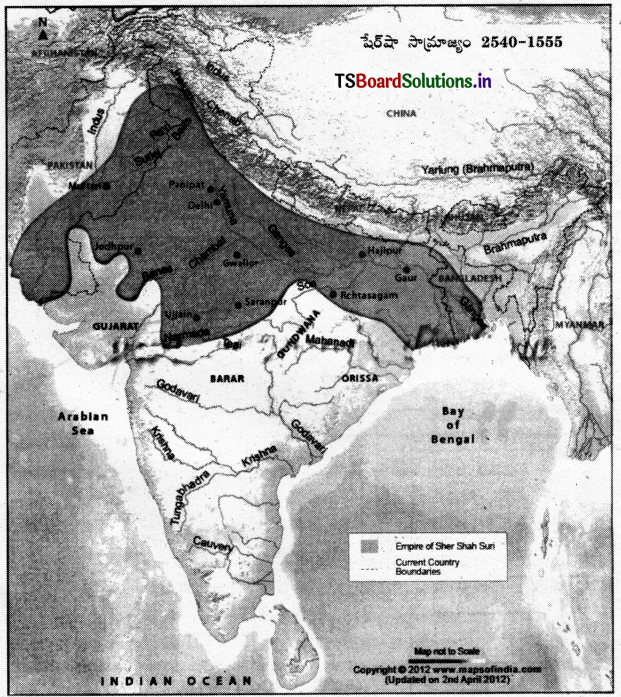
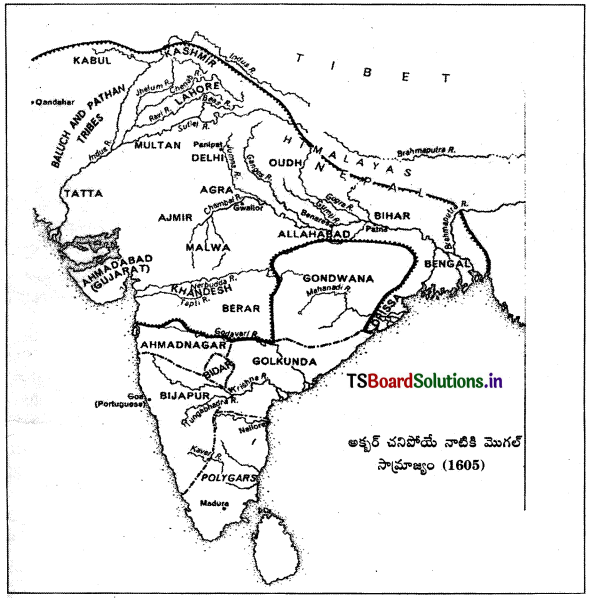
![]()
సంక్షిప్త సమాధాన ప్రశ్నలు
ప్రశ్న 1.
బాబర్ నామా ప్రాధాన్యత.
జవాబు.
మధ్యయుగ భారతదేశ చరిత్రలో గణనీయమైన వ్యక్తులలో బాబర్ ఒకడు. భారతదేశంలో మొగల్ సామ్రాజ్యాన్ని స్థాపించిన ఘనుడు బాబరు. క్రీ.శ. 1526లో మొదటి పానిపట్టు యుద్ధంలో ఢిల్లీ సుల్తాన్ అగు ఇబ్రహీం లోడిని వధించి ఢిల్లీ, ఆగ్రాలు ఆక్రమించి మొగల్ సామ్రాజ్యస్థాపన చేసాడు.
బాబర్ టర్కీ భాషలో గొప్ప పండితుడు. టర్కీ భాషలో బాబర్ రాసుకున్న స్వీయచరిత్ర తుజ్-కె-ఇ-బాబరీ (తన ఆత్మకథ). మొగల్ యుగమున రాయబడిన తొలి చారిత్రక గ్రంథము. ఈ గ్రంథం బాబర్ తురుష్క భాషా ప్రావీణ్యాన్ని, నాటి సమకాలీన పరిస్థితులను, హుమాయూన్ తొలి జీవితాన్ని తెలుసుకోవడానికి దోహదపడుతుంది. మధ్యయుగ ఆత్మకథల్లో దీనికి గణనీయమైన ప్రాధాన్యం ఉంది.
ప్రశ్న 2.
మొగల్ చరిత్రలో నూర్జహాన్ స్థానం.
జవాబు.
మొగల్ చక్రవర్తి జహంగీర్ నూర్జహాన్ను వివాహం చేసుకోవడమనేది జహంగీర్ కాలంలో మరొక ప్రధాన ఘట్టం. నూర్జహాన్ అసలు పేరు మెహ్రున్నీసా. ఈమెను సలీం (జహంగీర్) ప్రేమించాడని, వీరి ప్రేమని ఇష్టపడని అక్బర్ ఈమెను షేర్ ఆఫ్ఘనికిచ్చి వివాహం చేసాడని, సలీం రాజైనాక షేర్ ఆఫ్గన్ను వధించి ఆమెను వివాహం చేసుకున్నాడని కొందరు చరిత్రకారుల కథనం. క్రీ.శ.1611లో వివాహానంతరం ప్రధాన పాత్రధారి అయి అధికారాన్నంతా హస్తగతం చేసుకుని సింహాసనం వెనకుండి పాలన చేసింది. నాణాలపై తన పేరు ముద్రింపజేసుకుంది. తన తల్లిదండ్రులను, బంధువులను దర్బారు ఉన్నత పదవుల్లో నియమించింది. ఇది ఖుర్రం తిరుగుబాటుకు, వారసత్వ యుద్ధానికి కారణమైంది.
ప్రశ్న 3.
తాజ్మహల్ కీర్తిని చర్చించండి.
జవాబు.
షాజహాన్ గొప్ప భవన నిర్మాత. షాజహాన్ ఎర్రకోట జామామసీద్, దివాన్-ఇ-ఆమ్, దివాన్ ఖాస్ కట్టించాడు.
షాజహాన్ నిర్మాణాలన్నింటిలోను తలమానికమైనది తాజ్మహల్. ఆగ్రాలో యమునానది ఒడ్డున తన పట్టమనిషి ముంతాజ్భగం సంస్మరణార్థం నిర్మించాడు. దీనిని ప్రపంచ అద్భుత కట్టడాలలో ఒకటిగా భావిస్తారు. దీని నిర్మాణానికి 22 సంవత్సరాలు పట్టింది. ఆ రోజుల్లోనే నాలుగున్నర మిలియన్ల పౌన్లు ఖర్చయింది. ఉస్తాద్ ఈసా దీని శిల్పి. అయితే తాజ్మహల్ను షాజహాన్ కట్టించలేదని, బాబర్ కాలం నాటికే అక్కడ ఉందని ఇది రాజపుత్రుల నిర్మాణమని ఇటీవల కొందరు చారిత్రక పరిశోధకులు ప్రకటించారు. తాజ్మహల్ శివాలయమని ప్రొ.పి.యన్.వోక్ కథనం. కాలగమనంలో నిజం నిగ్గుతేలుతుందని ఆశిద్దాం. ఏది ఏమైనా తాజ్మహల్ కట్టడం ఓ అద్భుతం.
ప్రశ్న 4.
రెండవ పానిపట్ యుద్ధం ప్రాధాన్యత.
జవాబు.
అక్బర్ (క్రీ.శ. 1556–1605):భారతదేశాన్ని పాలించిన గొప్ప చక్రవర్తులలో అక్బర్ ఒకరు. ఇతని తండ్రి హుమాయూన్ మరణించిన తరువాత రాజ్యానికి వచ్చాడు. ఆఫ్ఘనుల సేనాధిపతి హేము ఢిల్లీని ఆక్రమించి ‘విక్రమాదిత్య’ అనే బిరుదు ధరించాడు. 1556లో జరిగిన రెండవ పానిపట్ యుద్ధంలో మొదట హేముకే విజయావకాశాలు దగ్గరయ్యాయి. కాని కంటికి బలమైన గాయం తగలడం వల్ల అతడు స్పృహ కోల్పోయాడు. నాయకత్వం కోల్పోయిన ఆఫ్ఘన్ సైన్యం చెల్లాచెదురైంది. మొగలాయిలు అఫ్ఘనులపై శాశ్వతంగా విజయం సాధించారు. భారతదేశంలో మొగల్ సామ్రాజ్యం సుస్థిరమైంది.
![]()
ప్రశ్న 5.
ఇబాదత్ ఖానా గురించి రాయండి.
జవాబు.
తన కొత్త రాజధాని ఫతేపూర్ సిక్రిలో 1575లో ఇబాదత్ ఖానా (పూజామందిరం) అనే భవనాన్ని నిర్మించాడు. హిందూ, జైన, బౌద్ధ, పారశీక, క్రైస్తవ, ఇస్లాం మొదలైన అన్ని మతాల పండితులను ఆహ్వానించి మత చర్చలు జరిపాడు.
ప్రశ్న 6.
దీన్-ఇ-ఇలాహి ముఖ్య లక్షణాలు.
జవాబు.
అక్బర్ విభిన్న మతగురువులతో ఆయా మత సిద్ధాంతాల గురించి తరచూ చర్చలు జరిపేవాడు. వాటి ఫలితంగా అతనికి కలిగిన అవగాహనతో క్రీ.శ. 1581లో దీన్-ఇ-ఇలాహి అనే నూతన మతాన్ని స్థాపించాడు. ఈ మతం వారు చక్రవర్తి కోసం ధన, మాన, ప్రాణాలను అర్పించాలి, మాంసాహారాన్ని మానివేయాలి, ఒకరికొకరు ఎదురైనపుడు అల్లాహా అక్బర్ అని సంభోదించుకోవాలి. అయితే ఈ మతాన్ని స్వీకరించమని అక్బర్ ఎవరినీ బలవంతపెట్టలేదు. బీర్బల్, అబుల్ఫజర్ వంటి కొందరే చేరారు. అబుల్ఫజల్ దీన్-ఇ-ఇలాహిన గురించి పేర్కొంటూ ఇది అందరి దీవెనలను అందుకోవడానికి ఉద్దేశింపబడిన నూతన విశ్వాసమార్గమన్నాడు. ఇది అక్బర్తోనే అంతరించిపోయింది.
ప్రశ్న 7.
ఫతేపూర్ సిక్రీ.
జవాబు.
అక్బర్ కూడా ఫతేపూర్ సిక్రీ వద్ద రాజభవనం కోటల సముదాయం నిర్మించాడు. ఇది ఆగ్రాకు 36 కి.మీ. దూరంలో కలదు. గుజరాత్, బెంగాలీ నిర్మాణ శైలి అందులో ప్రతిబింబిస్తుంది. గుజరాత్ నిర్మాణ శైలిని రాజపుత్ర రాణుల కోసం నిర్మించిన భవనాలలో వినియోగించాడు. కాని అన్నింటికంటే ముఖ్యమైన నిర్మాణం మాత్రం అక్కడి జమా మసీదు, ఫతేపూర్ సిక్రీకి ద్వారమైన బులంద్ దర్వాజా. దీని ఎత్తు 176 అడుగులు. అక్బర్ గుజరాత్ విజయానికి చిహ్నంగా దీనిని నిర్మించాడు. ఫతేపూర్ సిక్రీలోని ఇతర ముఖ్యమైన భవనాలలో జోధాభాయి రాజభవనం, అయిదు అంతస్థులతో ఉన్న పంచమహల్ కలవు.
ప్రశ్న 8.
షాజహాన్ కాలంనాటి నిర్మాణాల గురించి రాయండి.
జవాబు.
షాజహాన్ తాజ్మహల్ నిర్మాణంలో ‘పీత్రదురా’ పద్ధతిని భారీ ఎత్తున ఉపయోగించాడు. భవన నిర్మాణ కళలో తాజ్మహల్ ఒక అద్భుతంగా నిలిచిపోయింది. మొగలులు అభివృద్ధిపరచిన అన్ని వాస్తు కళాశైలుల సమ్మేళనమే తాజ్మహల్. తాజ్మహల్ అందానికి కారణం దాని విశాలమైన పాలరాతి గోపురం, నాలుగు సన్నటి మినార్లు. అందమైన తోట మధ్యలో నిర్మితం కావడంతో ఆ కట్టడానికి ఎనలేని అందం తెచ్చిపెట్టింది.
![]()
షాజహాన్ పాలనలో మసీదుల నిర్మాణం కూడా ఉన్నత దశకు చేరుకొంది. ఆగ్రా కోటలో పాలరాతితో మోతి మసీదు నిర్మించబడింది. ఢిల్లీలో జామా మసీదు ఎర్రటి ఇసుక రాయితో నిర్మించబడింది.
మొగల్ వాస్తుకళ 18, 19వ శతాబ్దం తొలి దశకాల వరకు నిరాఘాటంగా కొనసాగింది. మొగల్ నిర్మాణ శైలి ప్రాంతీయ, స్థానిక రాజ్యాల కట్టడాలపై సైతం ప్రభావం చూపింది. అమృత్సర్లోని సిఖి స్వర్ణదేవాలయం కూడా మొగల్ వాస్తు సంప్రదాయ శైలిలో నిర్మితమైంది.
